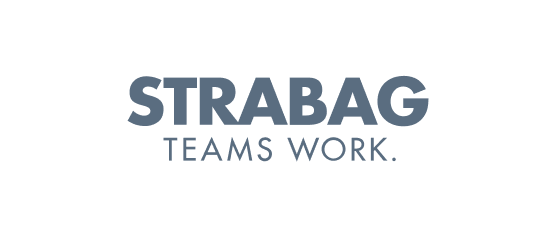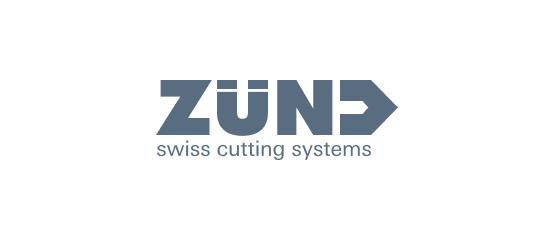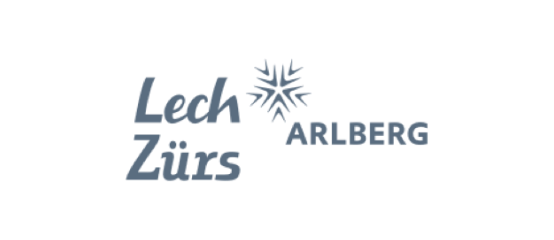Design Sprint: From idea to validated prototype in just 4 days
In just four days, we work with experts to design creative solutions and create a prototype that undergoes user testing. Based on the collected data, we define further measures to bring your vision to market maturity.

What is a design sprint?
The design sprint is an effective method for developing innovative solutions to complex problems and validating them with users. This serves to minimise the investment risk and increase competitiveness.
Advantages of the design sprint
What is a design sprint suitable for?
The Design Sprint is suitable for companies of all sizes and industries to develop and test new, customer-orientated ideas. It can be applied flexibly in different project phases.
Development of new products and services
The design sprint makes it possible to develop innovative ideas in a short space of time and test them with potential customers using a realistic-looking prototype. This allows new products and services to be quickly validated and successfully positioned on the market.
Examples
- Development of a new e-commerce product
- Creation of a new mobile app for a company in the tourism industry
- Development of a new platform for virtual events
- Development of a digital assistant for the customer service centre
- Creation of a new logo and brand concept
- Development of ideas for new services
Optimisation of existing products and services
The design sprint is also a very popular method when it comes to optimising existing products or services quickly and effectively. The creative process allows weak points to be identified in a short space of time, innovative solutions to be generated and then validated through user tests.
Examples:
- Optimising the user-friendliness of a website, web shop or app
- Optimisation of customer service
- Revision of the online ordering process
- Reducing delivery times for an e-commerce shop
- Redesigning the packaging for a product
- Customisation of an existing software tool for a specific target group
Validation of business models
The design sprint is also particularly suitable for validating and further developing business models and strategies. By working closely with experts and testing with potential customers, these can be quickly and effectively tested for their prospects of success.
Examples
- Development of a new sales strategy
- Optimising the pricing of a new subscription model, for example
- Checking the marketability of a new business idea (product-market fit)
- Examining the potential for market entry in a new country or a new region
- Testing various marketing channels for a new product
Digitalisation and optimisation of processes
The design sprint method is also very popular when it comes to optimising and digitalising existing processes. Creativity techniques are used to quickly identify weak points and develop digital concepts that are validated by experts before being introduced.
Examples:
- Optimisation of an ordering, production or maintenance process
- Redesigning the onboarding process for new employees
- Automation of work processes
- Optimisation of the supply chain
- Digitalisation of the ordering and payment system
- Creation of a digital ticket system
- Reduction of waiting times in a medical practice
Digital Transformation
The Design Sprint is an effective tool for driving digital transformation in companies. Either complex challenges can be broken down into individual initiatives or individual projects can be driven forward. The predefined structure and close collaboration with experts ensure that solutions are validated and therefore realisable.
Examples
- Development of a new digital platform
- Introduction of artificial intelligence into business processes
- Development of a new online platform for a tourism company
- Implementation of a mobile working solution
- Introduction of a digital learning platform for an education company
- Implementation of an e-commerce strategy for a stationary retailer
- Introduction of a digital collaboration tool for a decentralised team
- Conversion to digital processes
Organisational and team development
The design sprint is also a popular method for driving organisational change in companies or making collaboration in teams more efficient. The creative process makes it possible not only to look at the challenges of the team or organisation from different perspectives, but also to generate innovative solutions.
Examples:
- Restructuring of teams or business units
- Implementation of new working methods
- Development of a change management plan
- Development and implementation of a new organisational model for a company
- Revision of (internal) communication
- Implementation of a new management development programme
- Reorganisation of departmental structures
- Establishing a new workplace environment to promote creativity and collaboration

The design sprint process
The Design Sprint is a structured process in which a multidisciplinary team of experts, led by experienced Design Sprint Facilitators, solves specific challenges.
Results of the design sprint
The Design Sprint achieves measurable results in just four days and delivers clear recommendations for action.
Successful design sprints by our experts
Our design sprint experts accompany and guide you through the design sprint process, regardless of whether it is a start-up idea or an extensive digitalisation project.













Discover the potential of the design sprint for your project!
Talk to our experts and find out how the Design Sprint can help you with your project. Arrange your free consultation now!
FAQs on the design sprint
What is a design sprint?
The aim of the design sprint is to develop and validate innovative solutions for complex challenges in a short space of time. The focus is on the validated solution, which is tested with real users in the form of a realistic prototype. This method not only compresses months of work into four days, but can also significantly reduce the innovation risk for companies.
What does the design sprint process look like?
The Design Sprint is a four-day process consisting of the following five phases:
- Understanding: Identify challenges and understand problems
- Diverge: Generate a variety of possible solutions
- Converge: Select the most promising solution
- Prototyping: Create a functional, realistic prototype
- Testing: Validate the prototype with real users to get feedback on the created solution
How long does a design sprint take?
A design sprint usually lasts four days, from the interdisciplinary team analysing the challenge to the validated prototype. However, time should be scheduled before the "design sprint week" to brief the team and clarify essential questions, such as the definition of objectives. This ensures that the time for the design sprint is used effectively and efficiently.
What challenges is the method suitable for?
The Design Sprint method is suitable for complex challenges for which innovative solutions are required. Examples include the development of new products or services, the improvement of existing products or services or the optimisation and digitalisation of business processes.
Design sprints are particularly suitable for
- Ideas that you are not sure are worth developing.
- Risky projects that need support.
- Projects with tight deadlines or time pressure.
- Projects that have stalled and are not progressing.
What are the advantages of a design sprint?
A design sprint offers numerous advantages, including an effective and structured approach to complex challenges, a faster time to market for products and services, the integration of user feedback and, above all, the reduction of risks and costs for the company.
Can the design sprint also be carried out remotely (online)?
Yes, the Design Sprint can also be held remotely as a video conference. We use tried-and-tested online whiteboard tools to transfer the design sprint experience to the digital world. Nevertheless, it is important to consider the challenges and special features of remote work. We have therefore adapted the design sprint process specifically to the digital environment.
How many people can take part in a Design Sprint?
As a rule, a design sprint is carried out with an interdisciplinary team of around five to seven people. It is important that different perspectives and skills are represented in the team. However, we make sure that the team is no larger than seven people in order to ensure optimum focus and use the time as efficiently as possible.
Do all participants of the Design Sprint have to be present during the 4 days?
No, not all participants in the design sprint team need to be present for the entire four days.
However, in order to make the collaborative process effective, it is important that at least all team members attend the first two workshop days.
What is the difference between a design sprint and design thinking?
Design Sprint and Design Thinking are two different methods that are often confused with each other, as they both aim to solve complex challenges through creative approaches. Design thinking is an iterative method that aims to gain a deep understanding of user needs and perspectives in order to generate innovative solutions. In contrast, the design sprint is a structured and intensive method that aims to solve a problem within four days.















